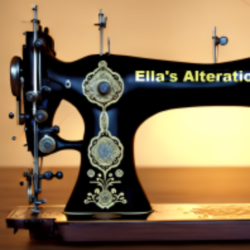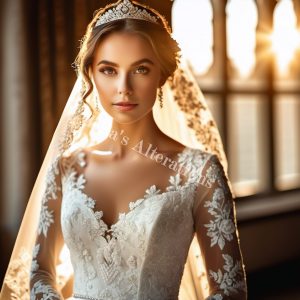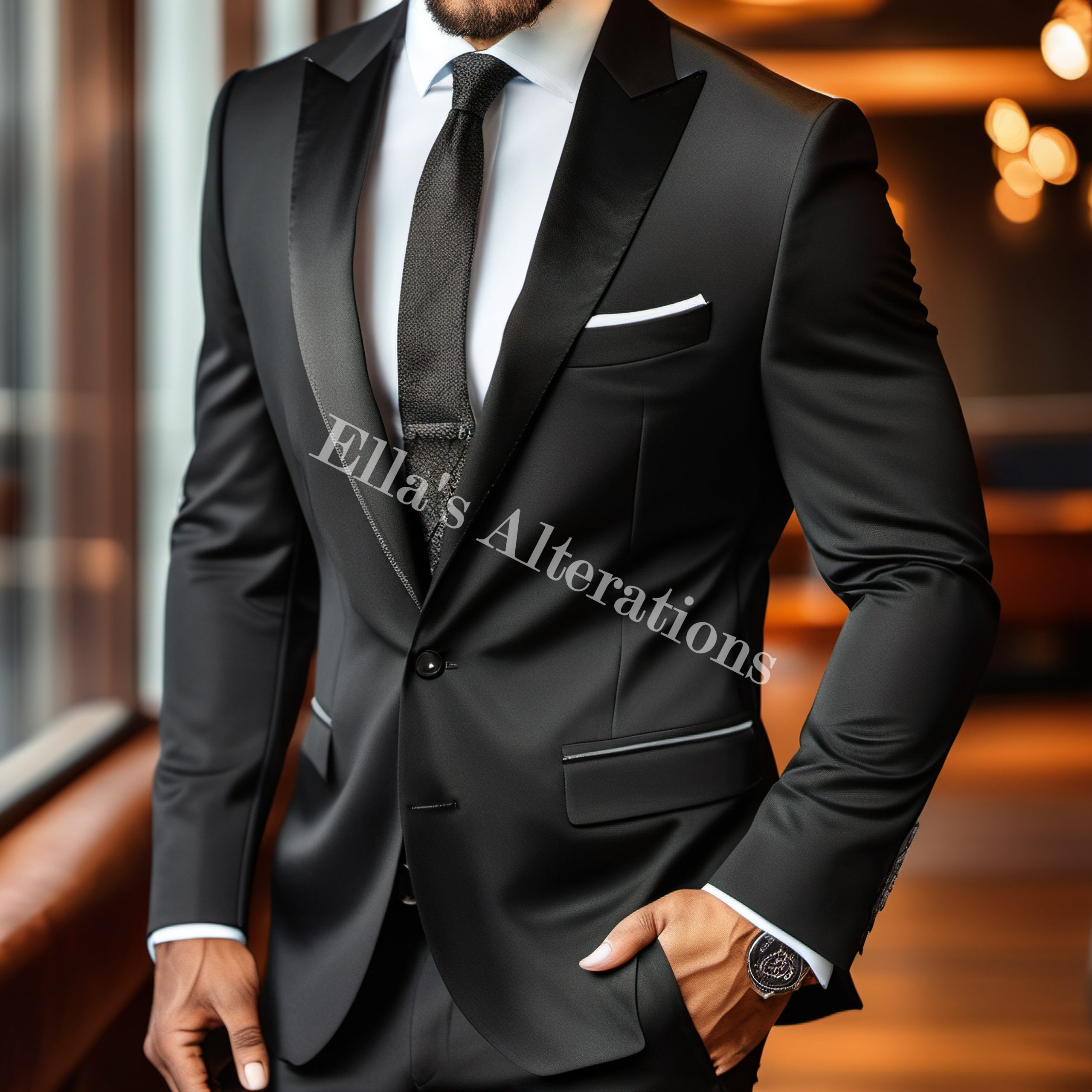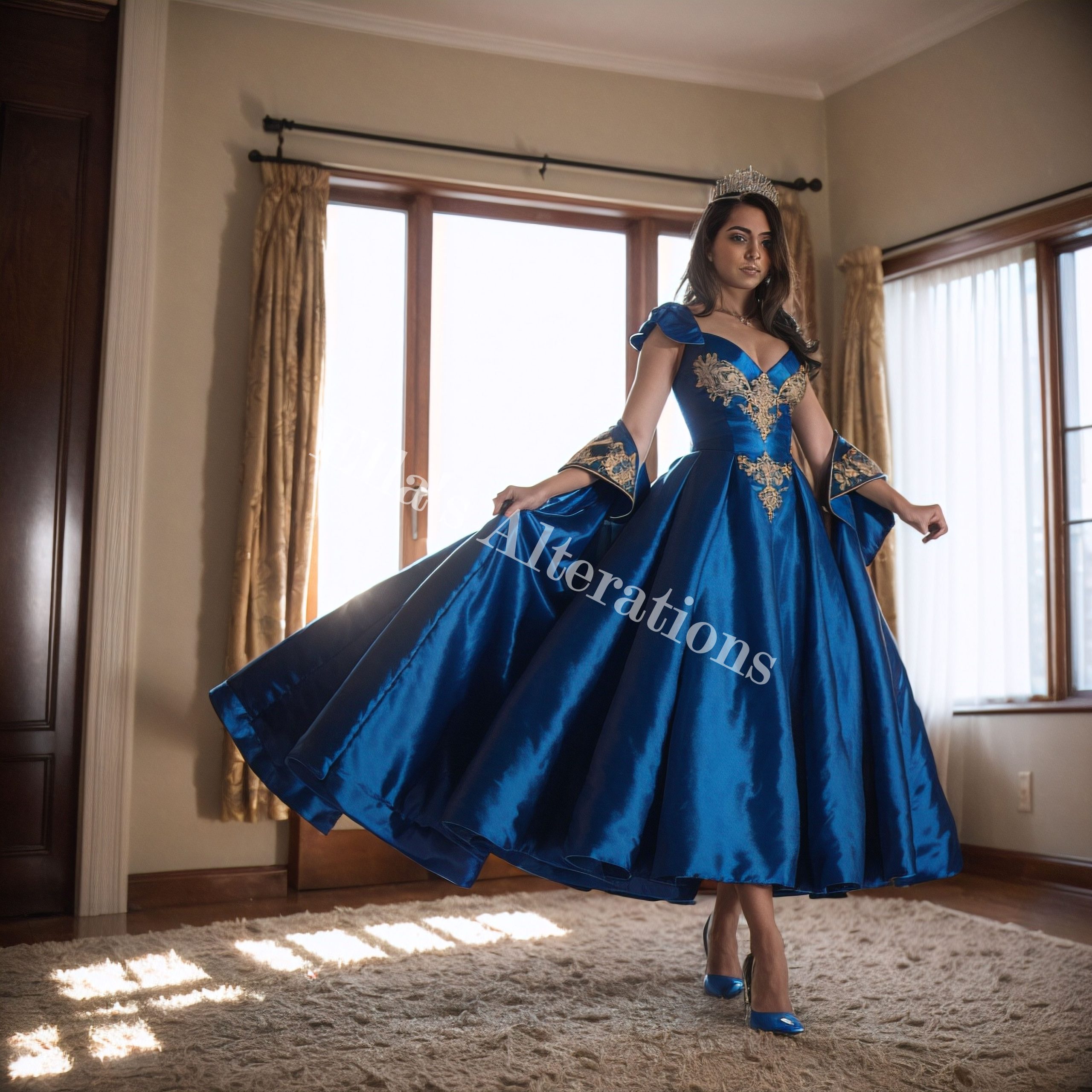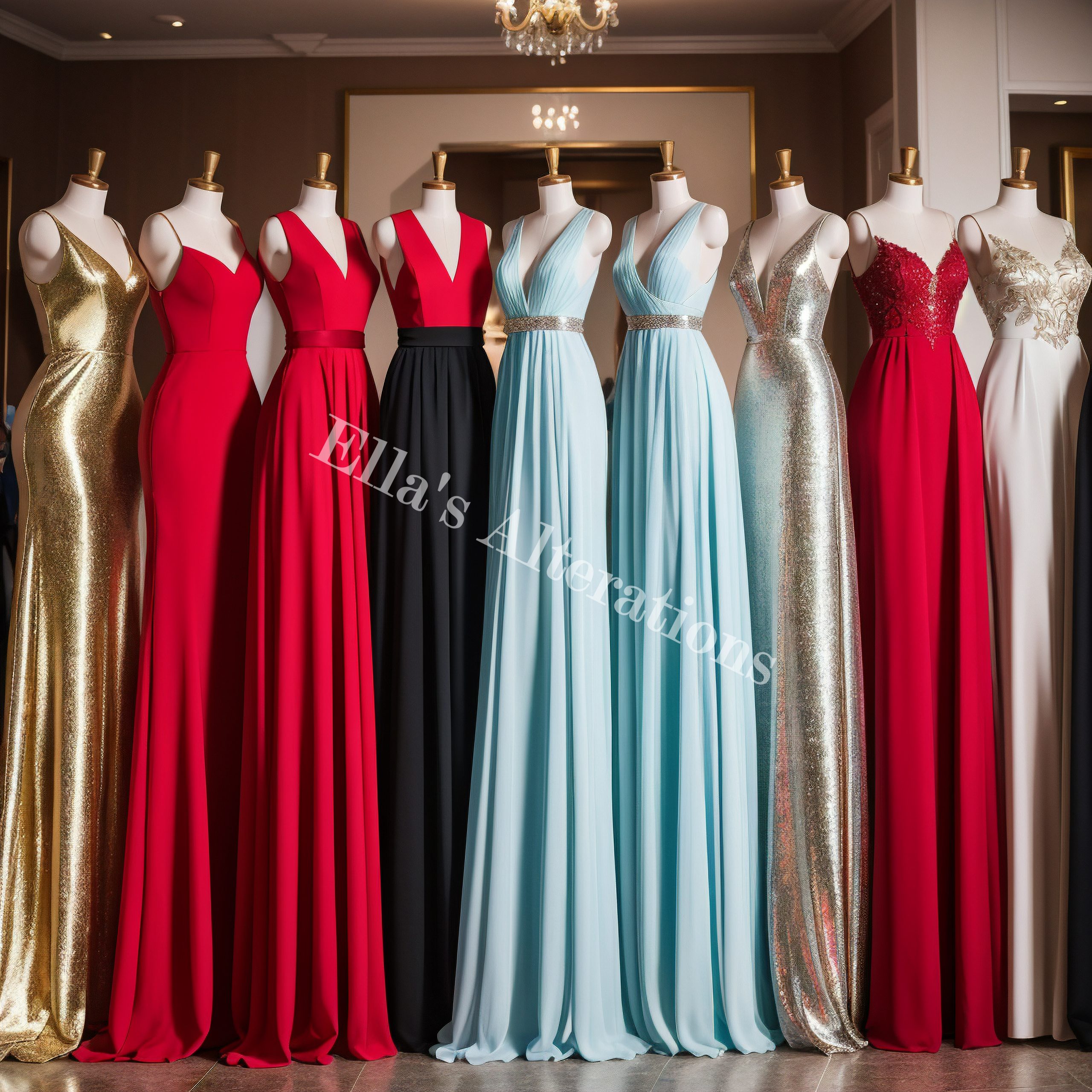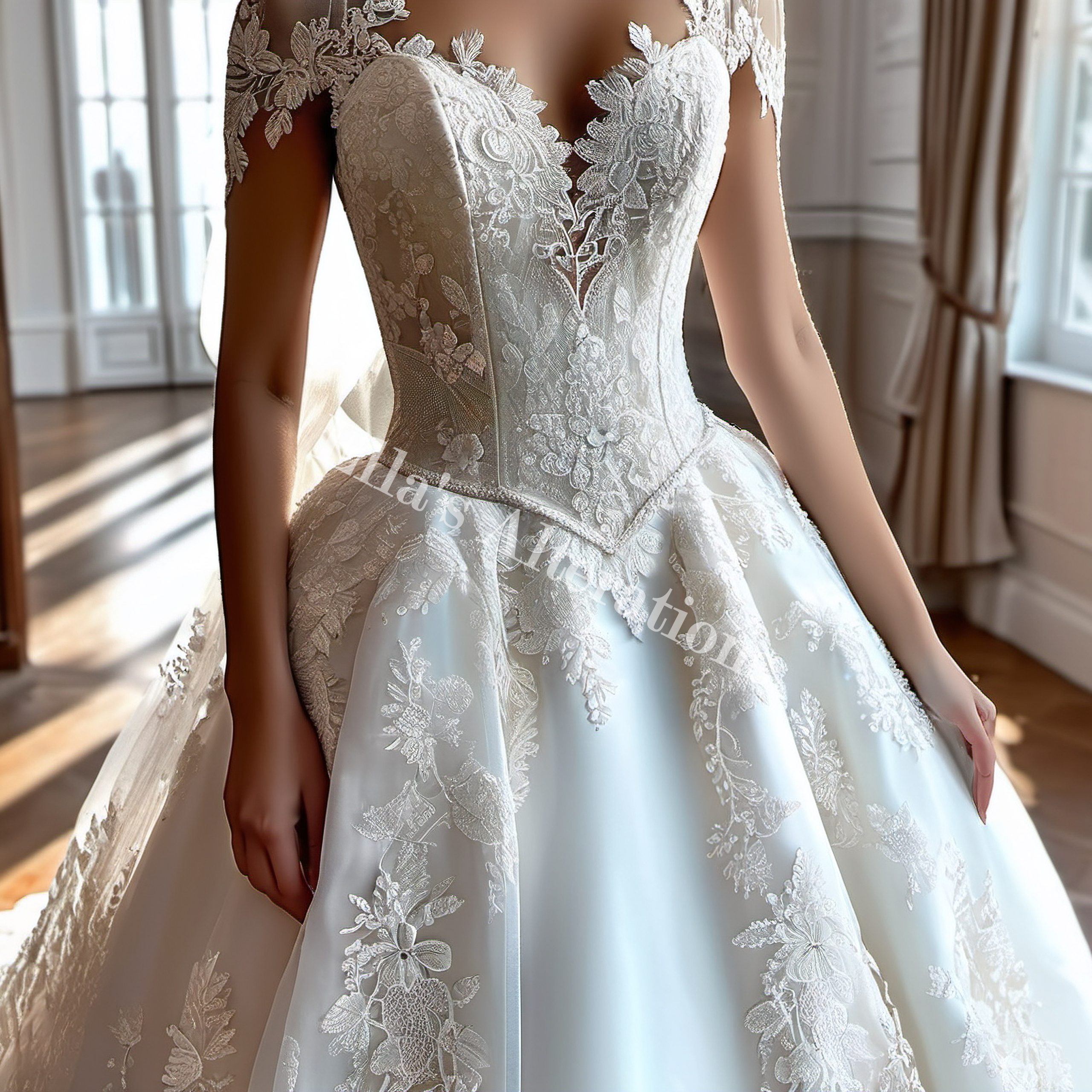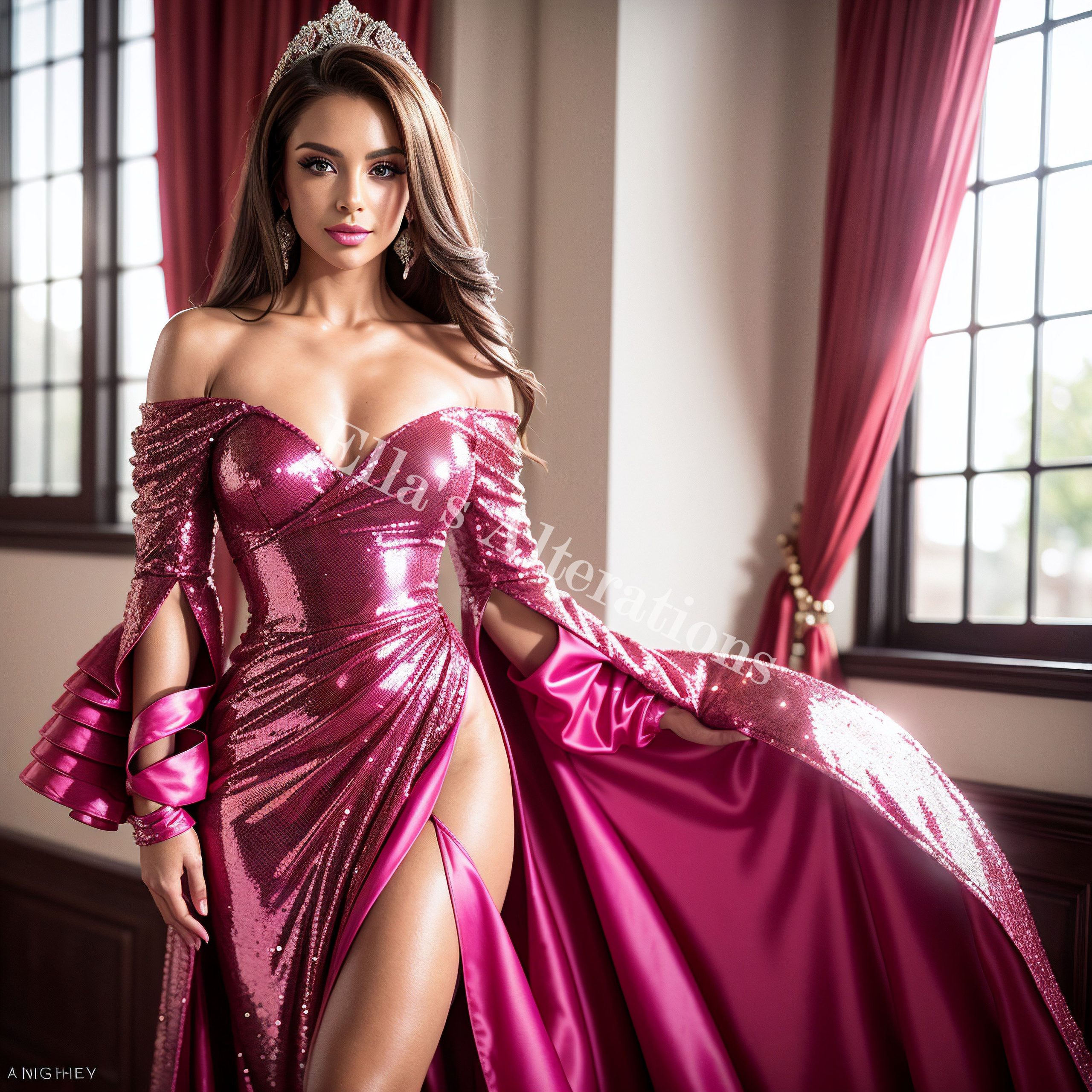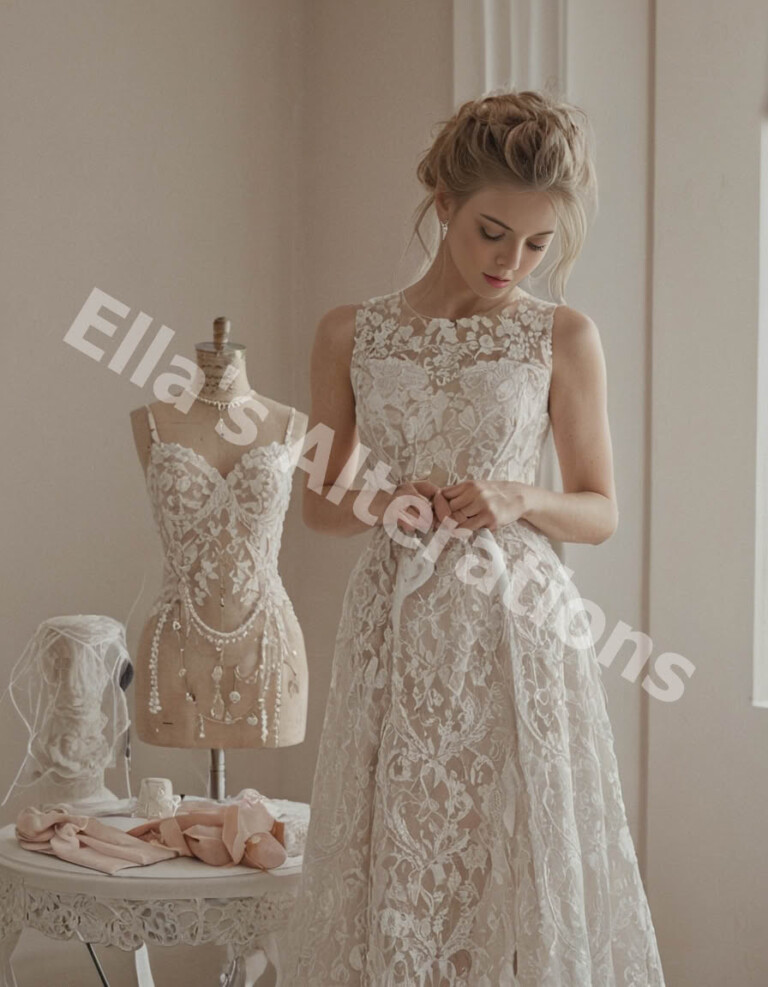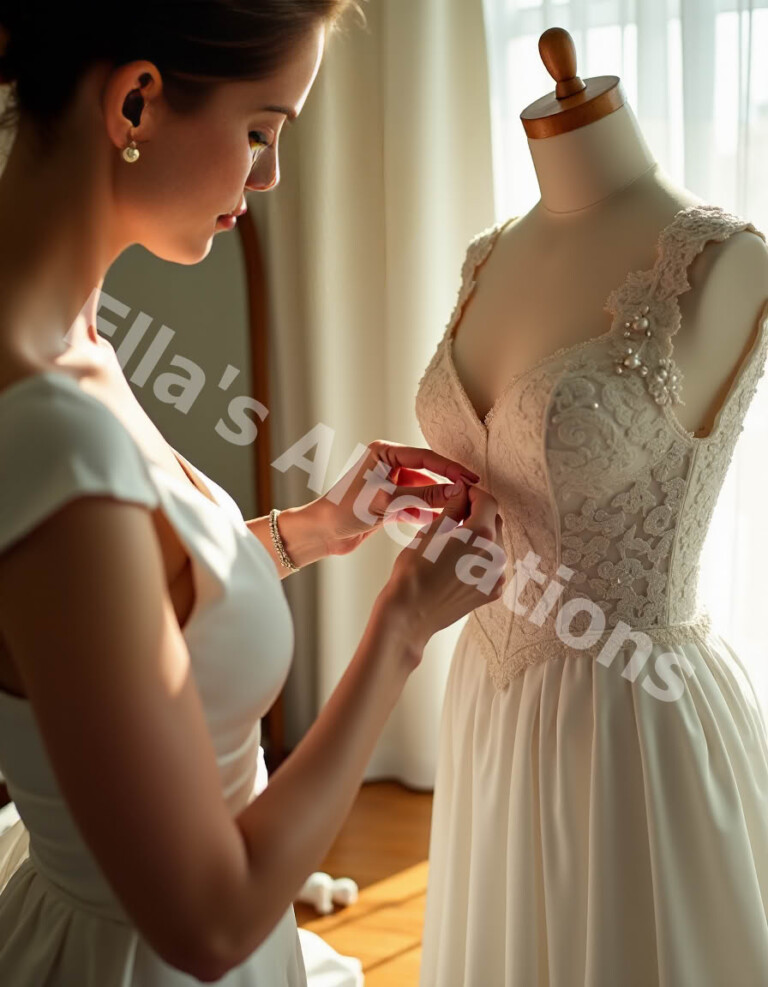Beyond Tradition: Unveiling the Allure of Non-White Wedding…
Introduction:
When it comes to the big day, every bride wants her wedding gown to be a reflection of her personality and style.
You know how forever and a day, brides have been all about the white dresses?
Well, guess what?
There's this cool new trend bubbling up where brides are ditching the traditional white and going for something more... well, them!
Instead of sticking to the same old white, brides are embracing all sorts of colors and styles for their wedding dresses.
It's like they're saying, "Hey, this is my day, and I want to stand out!" And honestly, it's refreshing to see.
This shift is more than just a fashion statement.
It's like brides are using their dresses to tell their own stories.
Whether it's a bold color choice or a unique design, these dresses are all about showing off the bride's personality and style.
It's like each dress is a canvas, and the bride is the artist painting her own picture of her big day.
Historically, the white wedding dress became popularized by Queen Victoria in the 19th century, signifying purity and innocence.
However, this tradition is being reimagined by modern brides who feel more aligned with personal expression than historical symbolism. T
oday, colored wedding gowns are not just a fashion statement but a declaration of independence from the expected.
They embody a bride's desire to stand out and celebrate her individuality on a day that is uniquely hers.
The allure of non-white wedding gowns is multifaceted.
For some, it’s about injecting a touch of whimsy and fantasy into their wedding day, much like wearing a garment fit for a grand ball or a romantic novel.
For others, it’s an opportunity to incorporate cultural elements into their ceremony, honoring heritage and personal history through the language of textiles and hues.
From the soft pastels of a spring garden wedding to the rich, deep tones of a bohemian autumn affair, the possibilities are endless.
The psychological impact of color cannot be overstated.
Colors evoke emotions and communicate messages without words.
A bride wearing a soft lavender gown may be expressing her playful, gentle nature, while another in a striking red dress might be channeling love, passion, or confidence.
The choice of a non-white gown allows a bride to not only be seen but truly recognized for who she is and what she values.
Also, as weddings become more personalized, brides are increasingly looking for ways to make every aspect of their ceremony speak to their unique identity and vision.
Choosing a non-traditional gown becomes part of a larger narrative—one that embraces modern values and reflects a shift towards more inclusive and expressive celebratory practices.
This movement isn’t just about fashion; it’s about brides forging new traditions that resonate more deeply with their personal life stories.
In this landscape, the role of the bridal gown is being redefined. It is no longer just an item of clothing but a canvas on which a bride paints her hopes, dreams, and loves.
This trend towards colorful and alternative wedding dresses isn’t merely a fleeting fashion statement—it's a transformative shift that empowers brides to not only look their best but to feel their best, by fully embracing their true colors.
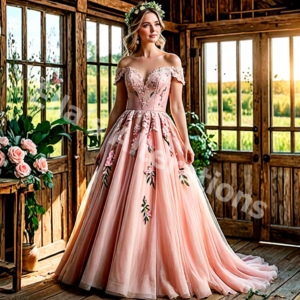
Historical Context and Modern Shift:
The journey of wedding gown colors through history is as rich and varied as the cultures of the world.
Long before the Victorian era popularized the white wedding dress, brides across different societies wore an array of colors on their wedding day, each with its own cultural and symbolic significance.
For instance, in Eastern traditions, particularly in countries like India and China, red has been a favored choice for centuries, symbolizing good luck and prosperity.
In contrast, Western brides in medieval times were more likely to wear their best dress, regardless of its color, simply signifying their best attire for a significant occasion.
The modern shift towards non-traditional wedding gowns is not just a break from the past but a reconnection with these deeper, often overlooked roots.
You know how trends come and go like waves on the beach? Well, colored wedding dresses are making a comeback like a boomerang circling back to its origin!
It's funny how we think of white wedding dresses as the gold standard, but actually, it's kind of a new thing.
Back in the day, brides wore whatever color they fancied, from bright reds to deep blues.
So, this resurgence of colored dresses is like a nod to the past, reminding us that tradition isn't always what we think it is.
Nowadays, brides have this awesome freedom to pick any color under the sun for their dresses.
Whether they want to pay homage to their cultural roots or just express their personality, there's a whole rainbow of options out there.
It's like the wedding dress aisle has turned into a candy store, and brides get to pick their favorite flavors!
Today’s bridal fashion scene is witnessing an exciting era of diversity and creativity.
Designers are increasingly showcasing non-white gowns in their collections, driven by demand from brides seeking to personalize their weddings more than ever before.
The trend is also significantly influenced by high-profile weddings where celebrities have chosen distinctive colors for their gowns, thereby setting new bridal trends.
These public figures have helped pivot the perception of what's acceptable or expected in bridal wear, encouraging more women to think outside the conventional bridal box.
As the modern bride becomes more conscious of her choices, the industry is responding with a broader palette of options.
Social media has totally changed the game when it comes to wedding fashion! Now, brides can scroll through their feeds and see all these amazing, one-of-a-kind weddings happening everywhere.
It's like having a front-row seat to a global fashion show where everyone's rocking their own unique style.
And let me tell you, seeing all those gorgeous dresses in every color of the rainbow?
It's enough to make any bride rethink the whole white dress thing.
Thanks to social media, brides are realizing that they don't have to stick to tradition to feel like a bride.
They can rock a dress that's as colorful and bold as they are and still have that magical bridal vibe.
It's like the internet is giving brides permission to break free from the mold and be true to themselves on their big day.
Additionally, the shift towards non-white wedding dresses aligns with the growing interest in sustainable and ethical fashion.
Many brides choose vintage or hand-me-down gowns as a way to integrate these values into their wedding, often opting to dye or alter these gowns to reflect their personality and style.
This approach not only supports sustainability but also adds a layer of personal history to the dress.
The evolving preferences for wedding attire reflect a broader cultural shift towards greater authenticity and self-expression.
The choice of a wedding gown color now serves as a statement of individuality and an expression of personal values, challenging the norms and redefining what it means to dress for one of life’s most significant milestones.
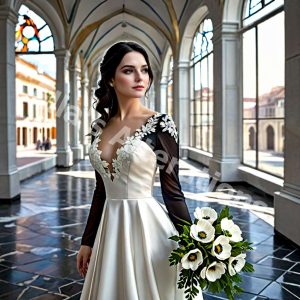
Why Choose a Non-White Wedding Dress?:
Choosing a non-white wedding dress is a declaration of personal style and an embrace of uniqueness that sets a wedding apart.
This choice is not just about selecting a color; it’s about making a statement that reflects the bride’s personality, values, and the story she wishes to convey on her wedding day.
In a world where weddings are increasingly personalized, a non-traditional gown can be a central element that expresses true individuality.
For many brides, the decision to wear a colored gown is driven by the desire to incorporate meaningful traditions or cultural heritage into their ceremonies.
Colors have powerful symbolic meanings that vary from culture to culture, and choosing a gown that reflects these traditions can add a profound layer of significance to the wedding.
For example, a bride might choose a red dress to honor her Eastern heritage where red is seen as auspicious and symbolizes luck and prosperity, or a green gown in cultures where it signifies growth and harmony.
What's more, stepping away from white opens up a spectrum of possibilities in terms of fashion and creativity.
Brides are no longer limited to the traditional cuts and fabrics of typical wedding dresses and can explore a range of materials, textures, and avant-garde designs.
This freedom allows for more expressive and adventurous bridal looks, from sleek, modern silhouettes in rich navy blues to bohemian rhapsodies in sun-drenched yellows.
Each choice tells a unique story, not just of the bride’s style but of her daring to redefine bridal norms.
Additionally, choosing a non-white dress can often mean stepping into a realm of practicality.
Colored dresses can be more forgiving than white when it comes to concealing any potential stains or wear, making them a suitable option for outdoor or more adventurous wedding settings.
They also offer the potential for reusability.
A non-white wedding dress can often be worn on other special occasions, providing a lasting memory and better value for the investment.
Emotionally, wearing a non-white gown can feel liberating for a bride.
It's a way to break free from the constraints of conventional expectations and to celebrate the wedding day in a way that feels most authentic.
This decision can resonate deeply with guests as well, offering them a glimpse into the bride’s world and making the ceremony even more memorable and personal.
The choice of a non-white gown is also a nod to inclusivity.
It acknowledges that beauty and bridal grace are not monochromatic.
Every bride, regardless of her background, size, or style preference, can find or create a gown that makes her feel beautiful and celebrated.
This movement towards diverse bridal fashion not only changes how brides dress but also how they feel about themselves on one of the most significant days of their lives, making each wedding a unique celebration of personal love stories.

Dare to Be Different: Embracing Bold Necklines for a Unique and Fashionable Wedding Dress.
Celebrity Inspirations:
Celebrity weddings often set trends and influence public perceptions of bridal fashion, and when it comes to choosing non-white wedding gowns, many stars have boldly led the way.
These high-profile choices not only catch the eye but also inspire brides around the world to think creatively about their own wedding attire.
By stepping out in stunning non-traditional gowns, celebrities have shown that bridal wear can be as unique and varied as everyday fashion.
One iconic example is Sarah Jessica Parker, who chose a striking black gown for her wedding.
This choice broke away from traditional bridal norms and left a lasting impression that continues to inspire brides to consider darker, more dramatic colors for their wedding dresses.
Similarly, Elizabeth Taylor’s marriage to Richard Burton showcased her in a canary yellow gown adorned with flowers, which perfectly captured her vibrant personality and love for bold, expressive fashion.
More recently, stars like Gwen Stefani and Jessica Biel have embraced non-white wedding gowns that beautifully reflected their personal style and the joyous spirit of their celebrations.
Stefani's choice of a dip-dyed dress with a pink gradient at the bottom added a pop of playful color and whimsy, aligning with her rock-star persona.
On the other hand, Biel opted for a soft pink gown that exuded romance and femininity, setting a trend for other brides looking for alternatives to traditional white.
Kaley Cuoco's pink tulle gown also made headlines, offering inspiration for those who dream of a fairy-tale wedding but with a twist.
Her choice demonstrated how subtle color can add depth and character to a wedding dress while still maintaining a bridal feel.
This example shows that non-white doesn't always mean completely abandoning the essence of a traditional wedding gown; it can also mean enhancing it with personal touches and splashes of color.
These celebrity wedding choices help to redefine what is considered bridal-appropriate, encouraging women to prioritize their own style preferences over convention.
The media coverage of these weddings helps to normalize the idea of non-white wedding dresses and broadens the spectrum of what is acceptable and celebrated in bridal fashion.
Each celebrity wedding dress that deviates from the norm invites everyday brides to dream bigger and bolder about their own choices.
The impact of these celebrity choices extends beyond just the aesthetics of the gown.
You know what's cool?
Social media is like this big megaphone shouting, "Hey, let's mix things up in the bridal world!"
It's all about inclusivity and embracing everyone's unique vibe.
With social media, it's like the bridal industry is opening its arms wide and saying, "Come on in! Bring your style, your story, your whole vibe!"
It's like a big party where everyone's invited, and there's no dress code except "Be Yourself."
And the best part? As these trends keep growing and changing, the bridal fashion scene just gets richer and richer.
So, whether you're dreaming of a classic white gown or something totally out there, there's a dress waiting to make your day as special and unique as you are.
It's like the bridal fashion world is your oyster, just waiting for you to dive in and find your perfect pearl!
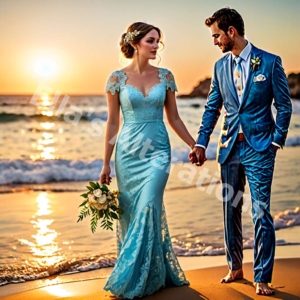
Choosing the Perfect Color and Style:
Selecting the right color and style for a non-white wedding gown can transform a bride's look, making her feel exceptionally special on her big day.
This choice goes beyond personal preference—it's about making a statement that resonates with her identity, the setting of the wedding, and the season.
Every color and style tells its own story, right? It's like each dress has its own personality!
So, when you're picking out your dream dress, it's cool to think about what vibe you want to send out into the world.
Like, do you want to feel bold and confident in a bright color, or maybe go for something soft and romantic?
It's all about tapping into that color psychology and finding the perfect match for you.
And hey, understanding a bit about fashion design can totally help you nail down your style.
Like, knowing which cuts and fabrics flatter your figure best can make all the difference.
So, when you find that dress that speaks to your soul, you'll know it's the one!
When choosing the color of the gown, brides should consider the symbolism and emotions associated with different colors.
Think about it like this: blue gives off this chill, calm vibe, perfect for saying "I do" by the ocean or in the countryside.
It's like bringing a slice of serenity to your big day.
Now, red?
That's all about passion and fire!
It's for those brides who want to turn up the heat and make a statement that screams confidence and strength.
Picture yourself strutting down the aisle like you own it—that's the power of red!
And let's not forget about those soft pastels like lavender or mint.
They're like a breath of fresh air, especially for spring weddings.
It's all about capturing that delicate, dreamy vibe of the season and sprinkling it into your wedding day.
The venue and theme of the wedding also play crucial roles in selecting the gown's color.
Picture this: you're saying "I do" in this sleek city loft with all these cool, modern vibes.
Now, imagine decking it out with deep, rich colors like emerald or sapphire.
It's like adding this splash of drama against the urban backdrop, making everything pop!
Now, flip the script to a rustic outdoor affair. You're surrounded by trees, maybe a babbling brook nearby.
Here, earthy tones and warm colors are where it's at.
They just blend right in with all that natural beauty, making the whole scene feel like it's straight out of a fairy tale.
It's like nature herself is throwing you the most magical wedding ever!
The style of the gown is equally important and should complement the bride's body type and personal taste.
An A-line dress can flatter most body shapes, providing a classic silhouette that is neither too fitted nor overly voluminous.
For taller brides, a sheath or mermaid style can accentuate natural curves and offer a sleek, elegant look.
Brides looking for a whimsical, romantic style might gravitate towards flowy, bohemian designs, which are perfect for outdoor, informal weddings.
Additionally, the season should influence both the color and the style of the gown.
Lighter fabrics and lighter colors are suitable for spring and summer, allowing the bride to feel comfortable and airy.
In contrast, winter weddings might call for richer colors and heavier fabrics like velvet or brocade, which not only look luxurious but also provide warmth.
Customization plays a pivotal role in achieving the perfect non-white gown.
Working with a tailor or designer who understands the bride's vision can ensure that every detail, from the fabric to the fittings and embellishments, is tailored to her desires.
This collaboration allows the bride to be actively involved in the creation of her gown, ensuring that the final piece is not just worn but cherished as a true representation of her individuality.
Ultimately, choosing a non-white wedding gown is an opportunity for brides to explore their creativity and express their unique love stories.
With thoughtful consideration of color and style, the wedding gown can become a centerpiece that fully embodies the bride's personality and the spirit of her wedding day.
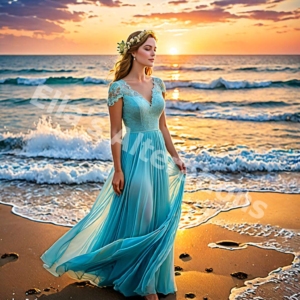
Bold Colors Are the New Trend in Wedding Dress Fashion.
Accessorizing Your Non-White Wedding Dress:
Accessorizing a non-white wedding dress offers a wonderful opportunity to enhance and complement the unique elements of the gown.
The right accessories not only add the finishing touches but also allow the bride to further personalize her look, making her feel truly special and confident.
Here, creativity and attention to detail play key roles in selecting pieces that harmonize with the gown’s color and style while respecting the overall theme and tone of the wedding.
When considering jewelry, the color and style of the dress can dictate the best metals and stones to use.
For instance, a deep navy gown pairs beautifully with silver or white gold, which can help illuminate the rich fabric, while a dress in warm tones like gold or blush might be complemented best by rose gold or yellow gold jewelry.
The use of gemstones can also add an additional layer of color and meaning; sapphires can enhance a blue gown, while pearls can add a touch of elegance to almost any color, especially pastels.
The choice of veil or headpiece is another significant consideration.
For non-white gowns, traditional white veils might not always be the best match.
Instead, opting for a veil in a complementary hue or one with color accents can integrate seamlessly with the rest of the ensemble.
Alternatively, brides might choose to forego the veil in favor of other headpieces like floral crowns, which can beautifully echo the natural elements of an outdoor wedding, or chic fascinators, which suit a more formal, sophisticated affair.
Footwear is another accessory where function meets fashion.
The color and style of the shoes can either match or contrast with the gown, depending on the desired effect.
A bride wearing a bold red dress might choose nude or gold shoes that allow the dress to stand out, or she might select black or silver to create a dramatic contrast.
Comfort is also crucial, especially if the bride plans to be on her feet for much of the day.
Stylish yet comfortable options like wedges or flats can be a practical choice for lengthy ceremonies or receptions.
Lastly, when accessorizing, consider the season and location of the wedding.
For cooler climates or seasons, a stylish shawl or wrap in a matching or contrasting color can keep the bride warm without sacrificing style.
For beach weddings, minimalistic and light accessories can complement a breezy, relaxed look, enhancing the carefree vibe of a seaside ceremony.
Accessorizing a non-white wedding dress is all about balance and personal expression.
Each accessory should feel like a natural extension of the gown and the bride herself, contributing to a cohesive and stunning bridal look that remains memorable long after the wedding day has passed.
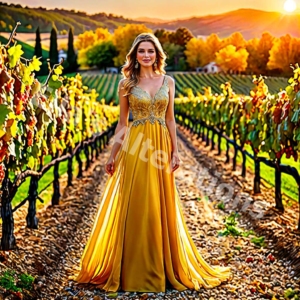
Customizing Your Unique Dress:
Customizing your unique dress is a journey that allows you to infuse your personal touch into every stitch and detail, ensuring your gown is not just worn, but also a testament to your individuality and style.
This process is particularly significant when opting for a non-white wedding dress, as it offers the freedom to explore unconventional ideas that truly represent who you are.
The first step in customization is choosing the fabric that best suits the aesthetic and feel of your wedding.
Fabrics like silk, chiffon, and organza offer a classic and romantic look, ideal for flowing and ethereal designs.
Heavier fabrics such as brocade or velvet make a bold statement and work well for more structured gowns, adding a touch of luxury and sophistication that is perfect for evening or cooler-season weddings.
Next, consider the silhouette that best flatters your body type and reflects your personal style.
Whether it's an elegant sheath dress that hugs every curve, a dramatic ball gown that makes you feel like royalty, or a simple A-line that offers comfort and beauty, the right silhouette can significantly enhance your confidence and presence on your big day.
Detailing on the gown can range from subtle to striking.
You might choose intricate lace patterns for a touch of vintage charm, dazzling beadwork for a glamorous look, or bold, hand-painted florals that turn the fabric into a piece of art.
These details not only enhance the beauty of the gown but also create a visual connection to the wedding theme and your personality.
Another important aspect of customization is the color choice.
Deciding on the perfect shade involves considering the season, venue, and time of day of the wedding.
Soft pastels might be perfect for a spring garden wedding, while rich jewel tones could be stunning for an autumn evening event.
Your choice can also reflect deeper personal or cultural meanings, adding an emotional layer to the aesthetic appeal of the gown.
Working closely with a tailor or designer is crucial throughout this process.
This collaboration ensures that your vision is understood and translated into reality with precision.
Experienced professionals can guide you through choices about fit, fabrics, and adjustments, making recommendations that align with your body type and desired style.
Ultimately, customizing your wedding gown is about creating a garment that resonates with your personality and love story.
It’s about making a statement that this is your day, and every detail of your dress has been lovingly chosen to celebrate your unique journey.
This approach not only results in a dress that is beautiful and memorable but also deeply personal, ensuring that you feel genuinely yourself as you walk down the aisle.
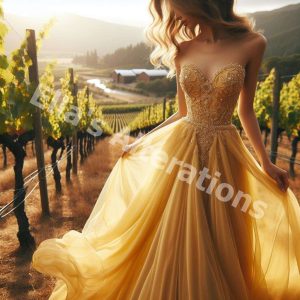
Sustainability and Unique Choices:
The movement towards sustainability in wedding fashion has opened a pathway for unique choices that resonate with eco-conscious brides.
Opting for a non-white wedding gown often aligns with a desire to make environmentally friendly decisions, as these gowns can be sourced from sustainable materials, reused, or even repurposed from vintage pieces.
This approach not only reduces the environmental impact but also adds a layer of uniqueness and personal history to the bridal attire.
Sustainable materials such as organic cotton, bamboo, recycled polyester, and peace silk are becoming increasingly popular in the creation of wedding dresses.
These fabrics are produced without harmful chemicals and under fair labor conditions, appealing to brides who are mindful of their ecological footprint.
Choosing a gown made from such materials ensures that the dress is not only beautiful but also kind to the planet.
On top of that, many brides are turning to vintage or second-hand dresses as a sustainable choice.
Vintage gowns offer a timeless elegance that cannot be replicated by modern designs and carry a sense of history and nostalgia.
These dresses can be tailored to fit the contemporary styles or color themes, giving new life to old fabrics that might otherwise be forgotten.
This option is not just environmentally sustainable but also allows for a high level of uniqueness, as each vintage dress is one-of-a-kind.
Repurposing family heirlooms is another sustainable approach that adds sentimental value to the wedding ensemble.
Transforming a mother’s or grandmother’s wedding dress into a modern non-white gown can be a meaningful way to honor family traditions while making a statement that reflects the bride’s individuality.
Tailors can dye, cut, and embellish the inherited fabrics to create a completely new piece that carries the legacy of the past into the present.
In addition to being environmentally friendly, these choices also challenge the conventional wedding industry’s norms, which often emphasize one-time-use, expensive, and high-maintenance garments.
By choosing sustainable and unique alternatives, brides are not only making a statement about their values but are also influencing the market to adopt more eco-friendly practices.
These sustainable practices extend beyond just the choice of dress.
Many brides are also considering the lifecycle of their gown after the wedding day.
Options for donating the dress to charity, selling it to another bride, or altering it for use on another occasion are becoming part of the wedding planning conversation.
This consideration ensures that the dress continues to have value and purpose, reducing waste and promoting a culture of reusability.
In essence, the choice of a non-white, sustainably sourced wedding gown embodies a commitment to environmental stewardship and personal expression.
It allows brides to stand out not only through their fashion choices but also through their dedication to making a positive impact on the world.
This approach to bridal wear is transformative, proving that beauty and sustainability can go hand in hand.
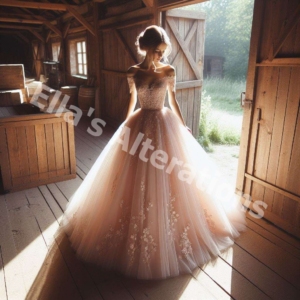
Addressing Concerns and Etiquette:
When choosing a non-white wedding gown, brides often face concerns and questions regarding tradition and etiquette.
This decision can sometimes be met with surprise or skepticism from family members or guests who are accustomed to traditional white gowns.
Addressing these concerns with sensitivity and confidence is crucial for ensuring that the bride’s choice is respected and celebrated.
One common concern is the appropriateness of non-white colors in a wedding setting.
Some family members may view traditional white as the only suitable choice due to its long-standing association with purity and bridal elegance.
To address this, it is helpful for brides to explain the personal significance behind their choice.
Sharing the reasons, whether they are based on personal style, cultural background, or a desire for something unique, can help others understand and embrace the decision.
Additionally, discussing the historical and cultural contexts of colored wedding dresses can reassure concerned parties.
Highlighting that white has not always been the norm, and that many cultures around the world embrace colorful wedding attire, can broaden perspectives and foster acceptance.
Etiquette also plays a significant role when opting for a non-traditional gown.
It's important for brides to consider the setting and formality of their wedding when selecting their dress color and style.
For instance, darker or bolder colors might be more suitable for an evening or formal wedding, while lighter or muted tones could be perfect for a daytime or casual event.
Ensuring that the gown fits the occasion can alleviate concerns about decorum and suitability.
Besides, brides should feel empowered to communicate openly with their wedding planner and venue coordinator about their choice.
This communication ensures that all aspects of the wedding—from the décor to the floral arrangements—are harmonious and complementary to the gown.
It also helps in managing any venue-specific dress codes or restrictions that might impact the choice of a non-white gown.
For those concerned about guest reactions, providing a hint about the dress code or theme in the wedding invitations can prepare guests for a non-traditional celebration.
This not only sets the tone but also subtly informs guests that the event might include some delightful surprises, such as the bride’s gown color.
Ultimately, the key to addressing concerns and maintaining etiquette lies in the bride's confidence in her choice.
By owning her decision and articulating her vision clearly, she can turn potential skepticism into anticipation and excitement.
This approach ensures that the wedding remains a joyful celebration of the couple's love and individuality, with the bride’s gown as a beautiful testament to their unique story.
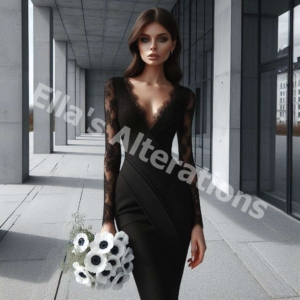
Real Bride Stories:
Real bride stories offer valuable insights and inspiration for those considering non-white wedding gowns.
These firsthand accounts provide a glimpse into the thought process, emotions, and experiences of brides who chose to break away from tradition and embrace alternative bridal wear.
From the initial decision-making to the final walk down the aisle, these stories highlight the beauty and significance of choosing a gown that truly reflects one's personality and style.
One bride, Sarah, shares how she always knew she wanted a non-traditional gown for her wedding.
As someone who loves vibrant colors and bold fashion choices, she felt that a white dress wouldn’t do justice to her personality.
After exploring various options, she fell in love with a deep emerald green gown that perfectly captured her spirit and complemented the lush outdoor setting of her wedding.
Sarah recalls feeling radiant and confident on her wedding day, knowing that her gown was a true reflection of who she was.
Another bride, Emily, shares her journey of transforming her mother’s vintage wedding dress into a modern masterpiece.
With the help of a skilled tailor, Emily redesigned the gown to fit her body and style while preserving the sentimental value of the original piece.
By dyeing the dress a soft blush pink and adding delicate lace accents, she created a truly unique and meaningful gown that honored her family’s history while embracing her own vision for her wedding day.
Emily’s story is a testament to the beauty of repurposing and reinventing bridal attire, turning something old into something new and beautiful.
For Mia, choosing a non-white gown was a decision rooted in cultural significance.
As someone of Indian descent, Mia wanted to incorporate elements of her heritage into her wedding attire.
She opted for a vibrant red lehenga adorned with intricate embroidery and gold accents, symbolizing love, prosperity, and tradition in Indian culture.
Mia’s dress not only celebrated her cultural identity but also added a vibrant pop of color to her wedding ceremony, creating a visual spectacle that left guests in awe.
These real bride stories showcase the diversity and creativity of non-white wedding gowns, proving that there is no one-size-fits-all approach to bridal fashion.
Whether it’s a bold color choice, a sentimental heirloom, or a cultural tradition, each gown tells a unique story and reflects the individuality of the bride wearing it.
These stories serve as a reminder that the most beautiful wedding gown is one that makes the bride feel confident, authentic, and utterly herself.

Conclusion:
In the realm of bridal fashion, the allure of non-white wedding gowns extends far beyond mere trendiness; it represents a profound shift in the way brides approach their big day.
Choosing a non-traditional gown is about more than just making a fashion statement; it’s a declaration of individuality, a celebration of cultural heritage, and a commitment to sustainability.
As we’ve explored the various facets of this movement, from historical roots to modern inspirations and real-life stories, it’s evident that the possibilities are as diverse as the brides themselves.
By unveiling the allure of non-white wedding gowns, brides are rewriting the rules and challenging outdated norms.
They are embracing color, texture, and creativity in ways that redefine bridal elegance and sophistication.
No longer confined to the limitations of tradition, brides are free to express their unique personalities and love stories through their choice of attire.
In the historical context, we’ve seen that white wedding dresses are a relatively recent phenomenon, and colored gowns have deep-rooted cultural significance across various societies.
This understanding allows modern brides to draw inspiration from the past while forging new traditions that reflect their contemporary values and preferences.
Celebrities have played a significant role in popularizing non-white wedding gowns, demonstrating that beauty and elegance come in many shades.
Their bold choices have inspired countless brides to explore unconventional options and to embrace their individuality with confidence.
The decision to choose a non-white gown is not without its challenges, as brides may face concerns from family members or questions about etiquette.
However, by communicating openly and confidently about their choices, brides can navigate these challenges with grace and poise.
Ultimately, the allure of non-white wedding gowns lies in their ability to empower brides to express themselves authentically on one of the most significant days of their lives.
Whether it’s a vibrant red dress, a sentimental heirloom, or a sustainable creation, each gown tells a unique story and reflects the bride’s values, personality, and love.
As we continue to celebrate the diversity and creativity of bridal fashion, may brides everywhere feel empowered to choose the gown that speaks to their hearts, defying tradition and embracing the beauty of individuality. In the end, it’s not about the color of the dress but the joy, love, and memories that it represents.

FAQs:
What are the benefits of choosing a non-white wedding dress?
Choosing a non-white wedding dress offers several benefits that cater to modern brides seeking uniqueness and personalization for their special day.
First, a non-white gown allows brides to showcase their individuality and express their personal style in a way that traditional white dresses may not.
By selecting a color that resonates with them, brides can feel more confident and comfortable, knowing that their attire reflects their true selves.
Additionally, non-white wedding dresses can hold cultural significance, allowing brides to honor their heritage or incorporate meaningful traditions into their wedding attire.
For example, red symbolizes luck and prosperity in many Eastern cultures, while blue may represent tranquility and stability.
Choosing a color with personal or cultural significance adds depth and richness to the wedding ceremony.
From a practical standpoint, non-white wedding dresses offer versatility and reusability.
Unlike traditional white gowns, which may only be suitable for a single occasion, colored dresses can often be worn again for other special events or occasions.
This makes them a more sustainable choice and provides better value for the investment.
Also, non-white wedding dresses can add a unique and memorable touch to the wedding celebration, setting it apart from more traditional ceremonies.
Whether it's a bold statement color or a subtle hue that complements the wedding theme, a non-white gown can leave a lasting impression on guests and create a memorable experience for everyone involved.
The benefits of choosing a non-white wedding dress are numerous, ranging from personal expression and cultural significance to practicality and uniqueness.
By opting for a colored gown, brides can create a wedding ensemble that truly reflects who they are and adds a touch of individuality to their special day.
Can any tailor alter or customize a non-white wedding dress?
While many tailors are skilled in clothing alterations, customizing a non-white wedding dress may require specialized knowledge and expertise.
Not all tailors may have experience working with the unique fabrics, styles, and designs often found in non-traditional wedding gowns.
Therefore, it's essential to choose a tailor who has experience or expertise in altering and customizing non-white wedding dresses specifically.
When searching for a tailor to alter or customize a non-white wedding dress, it's essential to consider their level of experience, reputation, and portfolio of previous work.
Look for tailors who have a proven track record of successfully altering and customizing wedding dresses, particularly those in colors other than white.
Communication is key when working with a tailor to customize a non-white wedding dress.
Clearly communicate your vision, preferences, and any specific alterations or customizations you desire.
A skilled tailor will listen attentively to your needs and offer expert advice and recommendations to ensure that your gown fits perfectly and reflects your unique style and personality.
While any tailor may be able to perform basic alterations, choosing a tailor with experience and expertise in customizing non-white wedding dresses is essential for achieving the desired results.
By selecting a skilled professional and maintaining open communication throughout the process, brides can ensure that their non-white wedding dress is tailored to perfection for their special day.
How do I choose the right color for my non-white wedding dress?
Choosing the right color for your non-white wedding dress is a deeply personal decision that involves considering several factors.
First of all, think about the overall aesthetic and theme of your wedding.
Are you planning a romantic, vintage-inspired affair, or a modern, minimalist celebration?
The color of your dress should complement the mood and style of the event.
For example, soft pastels like blush or champagne are perfect for a romantic garden wedding, while bold hues like emerald or navy make a statement in a more formal setting.
Consider also the season and time of day of your wedding.
Lighter, airy colors are ideal for spring and summer weddings, while richer, deeper tones work well for fall and winter celebrations.
Additionally, think about your skin tone and what colors flatter you the most.
If you have warm undertones, consider shades like ivory, champagne, or gold, while cooler undertones may be complemented by colors like silver, blush, or icy blue.
It's also essential to take into account any cultural or personal significance associated with certain colors.
For example, red symbolizes luck and prosperity in many Eastern cultures, while blue may represent tranquility and stability.
Choosing a color that holds personal meaning can add depth and significance to your wedding attire.
Ultimately, trust your instincts and choose a color that resonates with you and makes you feel beautiful and confident.
Don't be afraid to try on different shades and experiment with different fabrics to find the perfect color for your non-white wedding dress.
Is it appropriate to wear a non-white wedding dress?
Yes, wearing a non-white wedding dress is entirely appropriate and increasingly common in modern weddings.
Traditionally, white wedding dresses symbolize purity and innocence, but times have changed, and brides today are embracing the freedom to choose dresses that reflect their personal style, cultural heritage, and individuality.
The appropriateness of wearing a non-white wedding dress depends on various factors, including personal preference, cultural background, and the overall theme of the wedding.
If you feel confident and beautiful in a non-white gown and it aligns with your vision for your wedding day, then it is entirely appropriate to wear one.
It's essential to communicate your choice with your partner and family members to ensure everyone is supportive and understanding of your decision.
Additionally, consider the setting and formality of your wedding when selecting your dress.
While non-white dresses are suitable for any type of wedding, certain colors and styles may be more appropriate for specific venues or themes.
Ultimately, your wedding day is a celebration of love and commitment, and your dress should reflect your unique personality and style.
Whether you choose a non-white gown for its symbolism, cultural significance, or simply because it makes you feel like the best version of yourself, the most important thing is that you feel confident, beautiful, and true to yourself on your special day.
What should I consider when incorporating a non-white dress into my wedding theme?
Incorporating a non-white dress into your wedding theme involves careful consideration to ensure that your attire harmonizes with the overall aesthetic and ambiance of your special day.
Here are some essential factors to keep in mind:
Color Palette:
Your non-white dress should complement the color palette of your wedding theme.
Consider how the color of your dress will interact with the colors of the bridesmaids' dresses, floral arrangements, and decor.
Aim for cohesion and balance to create a visually stunning and cohesive look.
Venue and Setting:
Think about the venue and setting of your wedding when choosing your dress color.
For example, if you're having a rustic outdoor wedding, earthy tones like blush, sage green, or taupe may complement the natural surroundings beautifully.
Similarly, consider how the lighting and ambiance of the venue will impact the appearance of your dress color.
Theme and Style:
Your non-white dress should align with the overall theme and style of your wedding.
Whether you're planning a vintage-inspired affair, a bohemian garden party, or a glamorous black-tie event, your dress should reflect the mood and vibe of the occasion.
Choose a style and fabric that enhance the theme and create the desired atmosphere.
Cultural Significance:
If your non-white dress carries cultural significance or symbolism, ensure that it is integrated thoughtfully into your wedding theme.
Incorporate elements of your cultural heritage throughout the ceremony and reception to honor your traditions and create a meaningful and authentic experience for you and your guests.
Accessories and Details:
Coordinate your accessories and details to complement your non-white dress seamlessly.
Consider incorporating accent colors from your dress into your accessories, such as jewelry, shoes, and hairpieces, to tie the look together.
Pay attention to details like embroidery, beading, or lace that enhance the beauty of your dress and add texture and dimension to your overall ensemble.
By considering these factors when incorporating a non-white dress into your wedding theme, you can ensure that your attire enhances the overall aesthetic and creates a cohesive and memorable experience for you and your guests.

Brides Embrace Color: A Look at the Trend of Non-White Wedding Dresses.
About Us
|
Locations: 28.23362,
-82.181195, 25 Miles Location:
28.23362, -82.181195, 25 Miles Location:
28.23362, -82.181195, 25 Miles Location:
28.23362, -82.181195, 25 Miles Location:
28.23362, -82.181195, 25 Miles Location:
28.23362, -82.181195, 25 Miles Location:
28.23362, -82.181195, 25 Miles Location:
28.23362, -82.181195, 25 Miles Location:
28.23362, -82.181195, 25 Miles |
Address: 6986 Fort King Road, Zephyrhills FL 33541
Get Directions |
Book Your Fitting
Why Clients Trust Ella’s Alterations
Phone: +1 813-445-8894
Email: admin@ellasalterations.com
Hours:
